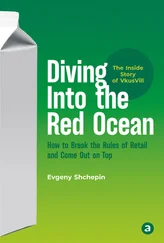Joseph J. Torres - Life in the Open Ocean
Здесь есть возможность читать онлайн «Joseph J. Torres - Life in the Open Ocean» — ознакомительный отрывок электронной книги совершенно бесплатно, а после прочтения отрывка купить полную версию. В некоторых случаях можно слушать аудио, скачать через торрент в формате fb2 и присутствует краткое содержание. Жанр: unrecognised, на английском языке. Описание произведения, (предисловие) а так же отзывы посетителей доступны на портале библиотеки ЛибКат.
- Название:Life in the Open Ocean
- Автор:
- Жанр:
- Год:неизвестен
- ISBN:нет данных
- Рейтинг книги:5 / 5. Голосов: 1
-
Избранное:Добавить в избранное
- Отзывы:
-
Ваша оценка:
- 100
- 1
- 2
- 3
- 4
- 5
Life in the Open Ocean: краткое содержание, описание и аннотация
Предлагаем к чтению аннотацию, описание, краткое содержание или предисловие (зависит от того, что написал сам автор книги «Life in the Open Ocean»). Если вы не нашли необходимую информацию о книге — напишите в комментариях, мы постараемся отыскать её.
Life in the Open Ocean: The Biology of Pelagic Species
Life in the Open Ocean: The Biology of Pelagic Species
Life in the Open Ocean — читать онлайн ознакомительный отрывок
Ниже представлен текст книги, разбитый по страницам. Система сохранения места последней прочитанной страницы, позволяет с удобством читать онлайн бесплатно книгу «Life in the Open Ocean», без необходимости каждый раз заново искать на чём Вы остановились. Поставьте закладку, и сможете в любой момент перейти на страницу, на которой закончили чтение.
Интервал:
Закладка:
Once an individual reaches its P c, it responds behaviorally and metabolically. Since metabolism scales positively with activity level, activity is minimized, precipitously dropping metabolic demand for ATP. Any ATP deficit resulting from the inability to meet its needs aerobically must be made up by anaerobic glycolysis. The hypoxia‐induced drop in activity resulting in lowered ATP demand is termed metabolic suppression (Seibel 2011; Seibel et al. 2016) and is not confined to pelagic fauna. It is the first weapon any species can wield to reduce the demand for ATP and is exploited by intertidal species, such as bivalves, during low tide exposure (Hochachka and Somero 1984; Hochachka and Guppy 1987).
Pelagic cephalopods dwelling in the California oxygen minimum also exhibit low P cs (3–7 mm Hg, Seibel et al. 1999). Data were collected from the vampire squid Vampyroteuthis infernalis , a fulltime resident of the California borderland’s oxygen minimum zone, on two characteristics of the “ Gnathophausia suite ”: gill diffusion capacity and blood pigment efficiency ( Table 2.4). The diffusion capacity, DGO 2, and oxygen affinity, P 50, of Vampyroteuthis shown in Table 2.4are indicative of a highly efficient gas‐exchange surface and a blood pigment capable of binding oxygen at extremely low concentrations. Both are quite close to those of Gnathophausia , suggesting that, with respect to these two important physiological characteristics, the species are employing a common strategy. Data from the other cephalopod species in Table 2.4show substantially lower gill diffusion capacity and oxygen affinity in the species inhabiting more normoxic environments.
Vampyroteuthis has a much lower metabolic rate than Gnathophausia . On a mass‐specific basis, the vampire squid’s respiratory rate is a little less than 10% that of G. ingens . On one hand, Vampyroteuthis ’ lower rate makes the job of the respiratory system a little easier because the absolute amount of oxygen required per unit time is less. On the other, because of the physics of diffusion it makes little difference, the oxygen gradient between environment and organism is still a tiny one. What might be expected, a priori , in Vampyroteuthis would be a lower capability for removing oxygen in quantity. Adaptations such as very high gill surface area and a highly developed circulatory system, important for delivering oxygen in quantity to satisfy tissue demands, would likely be less in evidence. For at least one of those characteristics, gill surface area, this appears to be the case; Vampyroteuthis has only a moderate gill surface area relative to other cephalopods (Madan and Wells 1996; Seibel et al. 1999).
Table 2.4 Metabolism (VO 2= ml O 2kg −1min −1), gill diffusion capacity (DGO 2= ml O 2kg −1kPa −1min −1), blood‐water oxygen gradient (∆ P g= VO 2/(DGO 2; in kPa) and hemocyanin‐oxygen affinity ( P 50= PO 2in kPa at 50% hemocyanin‐oxygen saturation) of Vampyroteuthis ingernalis in comparison to other cephalopods. Data for the lophogastrid crustacean, Gnathophausia ingens , are also shown.
Source: Reprinted by permission from Springer Nature Customer Service Centre GmbH: Springer Nature, Experimental Biology Online, Vampire Blood: respiratory physiology of the vampire squid (Cephalopoda: Vampyromorpha) in relation to the oxygen minimum layer, Seibel et al. (1999).
| Species | VO 2 a | DGO 2 | ∆ P g | P 50 b | References |
|---|---|---|---|---|---|
| Vampyroteuthis infernalis | 0.04 | 2.32 | 0.02 | 0.47 | Madan and Wells (1996), Seibel et al. (1997) |
| Nautilus pompilius | 0.28 | 0.38 | 0.74 | 2.3 | Brix et al. (1989), Wells et al. (1992), Eno (1994) |
| Octopus vulgaris | 0.35 | 0.45 | 0.77 | 2.45 | Wells and Wells (1983), Bridges (1994), Eno (1994) |
| Architeuthis monachis | n.a. | n.a. | n.a. | 1.65 | Brix et al. (1989) |
| Gnathophausia ingens | 0.56 | 3.73 | 0.15 | 0.19 | Belman and Childress (1976), Sanders and Childress (1990) |
n.a. = not available.
aNormalized to 5 °C assuming Q 10= 2.
bMeasured at pH 7.4 near environmental temperature.
The available evidence strongly suggests that most full‐ and part‐time residents of oxygen minima rely primarily on an aerobic strategy to make a living. The suite of adaptations exhibited by Gnathophausia ingens are likely found in whole or in part in all oxygen minimum layer residents.
Salinity
We noted in Chapter 1that salinity in the open ocean does not vary enough to be a major determining factor in the distribution of oceanic species, in contrast to estuaries where large drops in salinity occur over the course of a few kilometers and species compositions change accordingly. In the open ocean, salinity varies little over large oceanic areas, with a low from about 33‰ (in near‐surface waters of the Northeastern Pacific for example) to about 38‰ in the Red Sea and Mediterranean.
Marine species exhibit three basic strategies with respect to salinity. The first, typical of the invertebrates, is a strategy of osmoconformity. Virtually all marine invertebrates have a total internal ionic concentration that is nearly identical to that of seawater. As a consequence, they are in osmotic balance with their external environment and the need to regulate internal salinity is minimal. Regulation is usually restricted to ions such as magnesium that have potential for interfering with the function of nerves or muscle.
The second strategy, typified by the bony fishes, is one of hypo‐regulation. The prefix hypo is from the Greek meaning “under” or “below” (e.g. hypo‐dermic = under the skin). A hypo‐regulator keeps its internal salinity well below that of seawater. Bony, or teleost, fishes like tunas, sardines, and swordfishes have internal salinities 45–60% that of seawater. They maintain their low internal salinities using the suite of mechanisms briefly described below. However, it is important to remember that relative to the large difference between a fish’s internal salinity and that in the open ocean (e.g. 16 vs. 35‰), the small changes in oceanic salinity (typically <1‰) encountered by a pelagic fish during its lifetime are a trivial matter.
From a physiological perspective, one of a marine fish’s greatest problems is the loss of its body water. The basic laws of diffusion are such that ions and water, when left to their own devices, will move across biological membranes until their concentrations are equal on both sides of the membrane. For our purposes here, we can think of a fish’s skin as a membrane or barrier that is fighting the natural tendency of the ions in seawater to move into the fish, and the water inside of the fish to move out. Unfortunately for the fish, no skin is perfectly impermeable. Further, in order to breathe, the fishes must extract oxygen from seawater using their gills. In order to function effectively, the physical barrier between blood and seawater at the gill must be very thin indeed. Penultimately, fishes need to open their mouths to feed, which provides yet another chink in the armor. The final insult is that fishes cannot produce a concentrated urine like a kangaroo rat, or for that matter even like a human. The best that they can produce is a urine that is about the same salinity as the blood, so they do not lose much ground with their excretory system, but they do not gain any either.
Читать дальшеИнтервал:
Закладка:
Похожие книги на «Life in the Open Ocean»
Представляем Вашему вниманию похожие книги на «Life in the Open Ocean» списком для выбора. Мы отобрали схожую по названию и смыслу литературу в надежде предоставить читателям больше вариантов отыскать новые, интересные, ещё непрочитанные произведения.
Обсуждение, отзывы о книге «Life in the Open Ocean» и просто собственные мнения читателей. Оставьте ваши комментарии, напишите, что Вы думаете о произведении, его смысле или главных героях. Укажите что конкретно понравилось, а что нет, и почему Вы так считаете.












